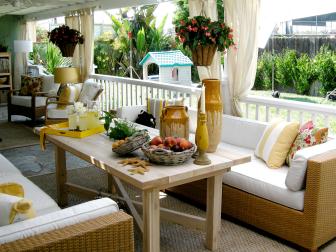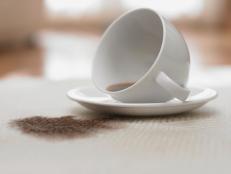Treated Wood vs. Cedar
These weather-resistant woods are good buddies when it comes to building outdoor projects.

Brian Patrick Flynn
Here, pressure-treated wood is used in a DIY project. Read on to discover the difference between treated wood and cedar.
If you’re thinking of building an outdoor project with wood, you’ll want to use a wood that withstands the weather and lasts a long time. Two all-time favorites are pressure-treated wood and cedar. Both have distinct characteristics that make them good choices, and you can get excellent results by playing to the strengths of each and using both on the same project.
Pros & Cons of Treated Wood
When it comes to comparing treated wood vs. cedar, pressure-treated wood is the sturdier and more weather-proof of the two. It’s highly resistant to insect attack and rot, and special versions rated for “ground contact” can be buried in soil and will continue to shrug off decay for decades. Pressure-treated wood excels when used for structural members such as support posts and joists.
Unfortunately, most pressure-treated wood isn’t that good-looking. The treatment process begins when the lumber, usually pine or fir, is run through machines that perforate the surfaces with hundreds of small incisions. These little holes ensure that the chemical treatment penetrates throughout the individual pieces of lumber. They also detract from the wood’s natural appearance (see Pressure-Treated Updates, below).
To apply the preservatives, the lumber is placed in an airtight chamber, and the air is removed. Liquid preservatives are introduced to the chamber and the resulting pressure forces the chemicals into the wood. Manufacturers have tried to include colored dyes with the preservatives to give pressure-treated lumber an organic appearance, but the results are mixed.
Also, pressure-treated wood usually is made from lower grades of lumber that's prone to cracking and warping when exposed to the elements. You can give pressure-treated wood an extra measure of protection by finishing it with a sealer or stain but give newly purchased pressure-treated lumber a few months to dry out before you do. New treated lumber invariably is still wet from the treatment process and won’t accept a finish until it dries completely. Painting isn't recommended — lower-grade lumber will shrink and expand slightly with changes in humidity, playing havoc with a painted finish.
Pros & Cons of Cedar
This is where cedar comes into the picture. Tight-grained, good-looking and weather-resistant, cedar is the best choice anywhere aesthetics are important. Cedar makes beautiful decking, railings, arbors and trellises. It can be sanded to a smooth finish that makes it ideal for handrails, bench seats and children’s play structures.
Due to its chemical properties, cedar is naturally weather-resistant and repels most bugs. But over the years it can crack slightly and develop a fuzzy surface texture unless it’s periodically refinished. Cedar accepts sealers and stains beautifully and should be refinished every two to three years. If you plan to keep your cedar’s natural color, note that cedar can darken dramatically when exposed to sunlight. You’ll want to be vigilant about applying clear sealers with UV (ultraviolet light) blockers to keep the rich color of the natural wood.
Don’t put cedar where it’s in direct contact with the ground or set it in concrete. It may last for a while, but eventually it will rot and deteriorate.
Pressure-Treated Updates
For years, the treated-lumber industry got a deservedly bad rap for preservatives that included toxic chromated copper arsenic (CCA). In 2003 the industry voluntarily suspended the use of CCA for residential use, although it continues to be used for commercial applications.
Today’s treated-wood preservatives still include some form of copper, which isn’t toxic and inhibits the growth of mold and mildew and repels insects. Some manufacturers avoid the telltale incisions used to help preservative chemicals penetrate the wood. Instead, they employ new high-pressure techniques that drive the preservatives deep into the heart of the lumber. Another trick: Adding water repellants to the preservatives to help the lumber fend off moisture.
No matter what pressure-treated lumber you decide to use, always wear a dust mask and eye protection when cutting pressure-treated wood, and wear gloves when handling the material.
Projects Using These Woods
How to Build an Outdoor Minibar
Build an outdoor bar out of cedar wood complete with a miniature refrigerator, bottle opener and towel hooks.
How to Build a Tree-Encompassing Deck
Bring nature into your outdoor entertaining area with a deck built around existing trees using pressure-treated wood.
Build an Outdoor Cedar Table with Recessed Planter
A patio table is made from cedar and has a rectangular planter sunken into the middle.
















































